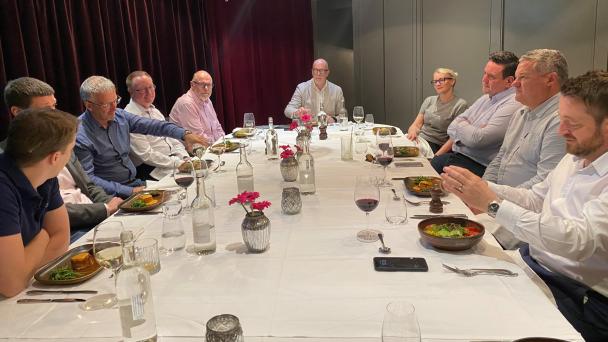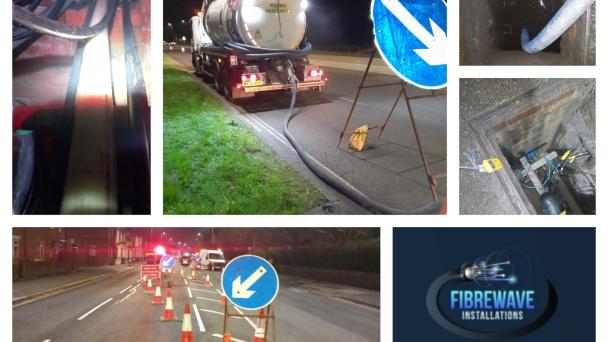
The five most disruptive tech innovations affecting future network demand
Global data traffic is expected to double in three years, thanks largely to several disruptive tech innovations that will provoke unprecedented shifts in data usage and network demand.
The question is not whether change is coming (it undoubtedly is), but whether UK networks are ready for the impact.
In December, we published Ready for impact?, a comprehensive report on the five most disruptive technologies affecting future network demand.
So what are the technologies that will bring about this global data traffic growth?
We explore each of the five innovative technologies in this blog post. For more information, download the full report.
1. Distributed Ledger Technology (DLT)
Distributed Ledger Technology, the foundation on which blockchains are built, allows multiple users to access, validate, and update records in a shared database.
Blockchain will underpin a broad spectrum of activities in future. One use case for DLT is the potential it holds for unlocking the Internet of things (IoT), the growth of which is predicted to reach 30 billion connected devices by 2027.
Each transaction on a blockchain needs to be validated by other nodes on a network, which is an extremely bandwidth-intensive activity. Think of the millions of transactions, on thousands of different blockchains, and it’s easy to appreciate that the underlying networks need to be ready to handle an extremely large amount of data flowing two ways (upload and download).
2. The Metaverse
The metaverse promises a new realm of digital interaction, combining virtual reality (VR), augmented reality (AR), and video to create immersive, exciting, and persistent online environments. This digital universe will drive unprecedented data consumption, requiring networks to support high volumes of bi-directional, synchronous traffic with minimal latency.
As the metaverse becomes more widespread, it will favour network architectures with storage and compute power closer to the edge, to ensure that the experience is seamless and immersive for consumers.
3. Quantum Technology
Quantum computing introduces a paradigm shift in processing power, with its potential to solve complex problems at unprecedented speeds.
As quantum technology grows, network providers must develop architectures capable of high-speed, secure data transmission to and from these powerful computing systems.
Given the immense processing requirements involved, quantum computers will need to be housed in data centres, and so the connectivity needed to serve these sites needs to be fast, secure and robust. Businesses need to be able to send vast amounts of data for the quantum computer to crunch. Poor connectivity will create a bottleneck and lag that cancels out potential benefits.
4. Extended Reality (XR)
Extended Reality (XR) encompasses Virtual Reality (VR), Augmented Reality (AR), and Mixed Reality (MR), merging digital and physical worlds to create fully immersive experiences. As the technology progresses towards lightweight, all-day wearable devices, the bandwidth for streaming continuous high-resolution, immersive content must grow correspondingly.
XR demands networks capable of handling this content with near-zero latency to avoid user discomfort. Not only are the bandwidth requirements substantial, but edge processing is needed to minimise latency by processing data closer to the user.
For fibre providers, XR represents a significant opportunity to lead in providing the access and backbone infrastructure for next-generation digital experiences. As these devices become commonplace, they will demand a level of performance that can only be met by a combination of FTTP and 5G technology.
5. Artificial Intelligence (AI)
AI's capability to analyse and learn from data is transforming industries, from automating complex processes to enhancing decision-making. The proliferation of AI applications increases the demand for networks to support the intensive data flows required for machine learning and real-time analytics.
Broadly speaking, there are two main types of AI applications: Training Systems and Inference Systems. While Training Systems are increasing the demand for processing power in Data Centres, Inference Systems will have a bigger impact on local access infrastructure. Inference systems play an important role in powering real-time IOT sensoring applications where low-latency, full-fibre infrastructure is critical in enabling small pieces of information to be relayed to and from processors at the edge of the network.
The road ahead
As these technologies continue to evolve and intersect, one thing is clear: ubiquitous, high bandwidth, low latency connectivity is going to be needed right across the UK. Altnets are in a great position to meet this burgeoning demand by scaling and upgrading the UK's networks. And the most successful Altnets will be those that ‘stay ahead’ and deliver a network that addresses the unique needs of new technologies.
- Bandwidth: Providers need to consider how they will deliver the higher bandwidths that these new technologies demand. GPON and XGS-PON are the prevalent access technologies today, but we are starting to see commercial trials of 25G-PON, offering even greater speeds and capacity.
- Latency: Simply put, low latency is critical in delivering a seamless experiences for end users. The latency requirements of these emerging technologies can only be met by full fibre and 5G connections. Those deploying new infrastructure will play a critical role in providing fibre-based access services as well as underlying connectivity for dense, 5G networks.
- Symmetry: Even without these evolving technologies, our internet usage has changed forever. Both business and consumer applications now demand much more upstream bandwidth, and failing to deliver it creates a poor customer experience. Providers should now consider symmetrical data patterns as a standard requirement.
How we can help
At Virgin Media Business Wholesale we recognise the direction of progress (and we’re excited by it). Upgrading UK networks is essential to fully realising the potential of these technologies for our economy. As a preferred connectivity provider to altnets, we support their expansion by providing backhaul infrastructure across the UK.
Get in touch with us at WholesaleBD@virginmedia.co.uk to explore how we can help support your transformation projects.




